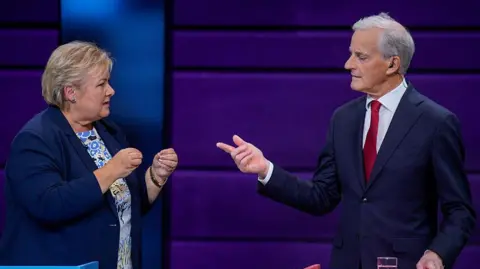Australia is on the brink of a crucial federal election, and as the countdown begins, a pressing issue has taken center stage: the housing crisis. With skyrocketing house prices and relentless rental increases, homeownership has slipped out of reach for many Australians, making housing affordability a pivotal concern for voters.
Many Australians are feeling the pressure of rising living costs in addition to the looming uncertainties of the global economy, heightening their demand for more effective solutions to the housing debacle. Both major political parties, the Labor Party and the Liberal-National Coalition, have made ambitious pledges to address the crisis, but it remains to be seen whether these commitments will resonate with voters seeking to restore their traditional aspirations of owning a home.
The current state of housing in Australia can be summarized quite simply: there's not enough supply to meet the growing demand for homes, particularly in urban areas. Stifling planning regulations have hindered the construction of new residences, limiting availability in desirable metropolitan regions like Sydney and Melbourne. As a result, Australians are grappling with severe affordability issues not only for purchasing homes but for renting as well. Data reveals that the average house price in Sydney is nearing A$1.2 million, while nationwide rental rates have surged dramatically since the COVID-19 pandemic.
Despite commonly held beliefs, immigration is not significantly driving up housing demand, as many new arrivals opt for temporary accommodations instead of entering the property market directly. Furthermore, foreign property purchases account for a mere fraction of all sales, yet government responses have shifted towards reducing migration and limiting foreign investment in an effort to ease demand.
The strategies proposed by major parties include an ambitious plan from Labor for 1.2 million new homes by 2029 along with substantial investments to assist first-time buyers and enhance social housing availability. In contrast, the Coalition's plan emphasizes reducing immigration and foreign investment while allocating funds for vital infrastructure around housing developments. The Greens have taken a different route by focusing on rent control and broader reforms aimed at alleviating pressures on renters.
While these initiatives are seen as steps in the right direction, experts caution that they may not suffice to solve the deep-rooted issues causing the housing crisis in Australia. Shortcomings in addressing social housing, along with proposals that could inadvertently inflate housing prices, indicate that a comprehensive approach combining the best of all parties' policies may be necessary for real change.
Caught in a web of policy promises and rising costs, Australians are now left with the daunting task of shaping their future through the ballot box, all while confronting a deeply entrenched housing crisis that has evolved over decades. As the election approaches, the hope remains that more rigorous attention to the housing dilemma will result in actionable solutions for a population increasingly feeling the strain.
Many Australians are feeling the pressure of rising living costs in addition to the looming uncertainties of the global economy, heightening their demand for more effective solutions to the housing debacle. Both major political parties, the Labor Party and the Liberal-National Coalition, have made ambitious pledges to address the crisis, but it remains to be seen whether these commitments will resonate with voters seeking to restore their traditional aspirations of owning a home.
The current state of housing in Australia can be summarized quite simply: there's not enough supply to meet the growing demand for homes, particularly in urban areas. Stifling planning regulations have hindered the construction of new residences, limiting availability in desirable metropolitan regions like Sydney and Melbourne. As a result, Australians are grappling with severe affordability issues not only for purchasing homes but for renting as well. Data reveals that the average house price in Sydney is nearing A$1.2 million, while nationwide rental rates have surged dramatically since the COVID-19 pandemic.
Despite commonly held beliefs, immigration is not significantly driving up housing demand, as many new arrivals opt for temporary accommodations instead of entering the property market directly. Furthermore, foreign property purchases account for a mere fraction of all sales, yet government responses have shifted towards reducing migration and limiting foreign investment in an effort to ease demand.
The strategies proposed by major parties include an ambitious plan from Labor for 1.2 million new homes by 2029 along with substantial investments to assist first-time buyers and enhance social housing availability. In contrast, the Coalition's plan emphasizes reducing immigration and foreign investment while allocating funds for vital infrastructure around housing developments. The Greens have taken a different route by focusing on rent control and broader reforms aimed at alleviating pressures on renters.
While these initiatives are seen as steps in the right direction, experts caution that they may not suffice to solve the deep-rooted issues causing the housing crisis in Australia. Shortcomings in addressing social housing, along with proposals that could inadvertently inflate housing prices, indicate that a comprehensive approach combining the best of all parties' policies may be necessary for real change.
Caught in a web of policy promises and rising costs, Australians are now left with the daunting task of shaping their future through the ballot box, all while confronting a deeply entrenched housing crisis that has evolved over decades. As the election approaches, the hope remains that more rigorous attention to the housing dilemma will result in actionable solutions for a population increasingly feeling the strain.





















